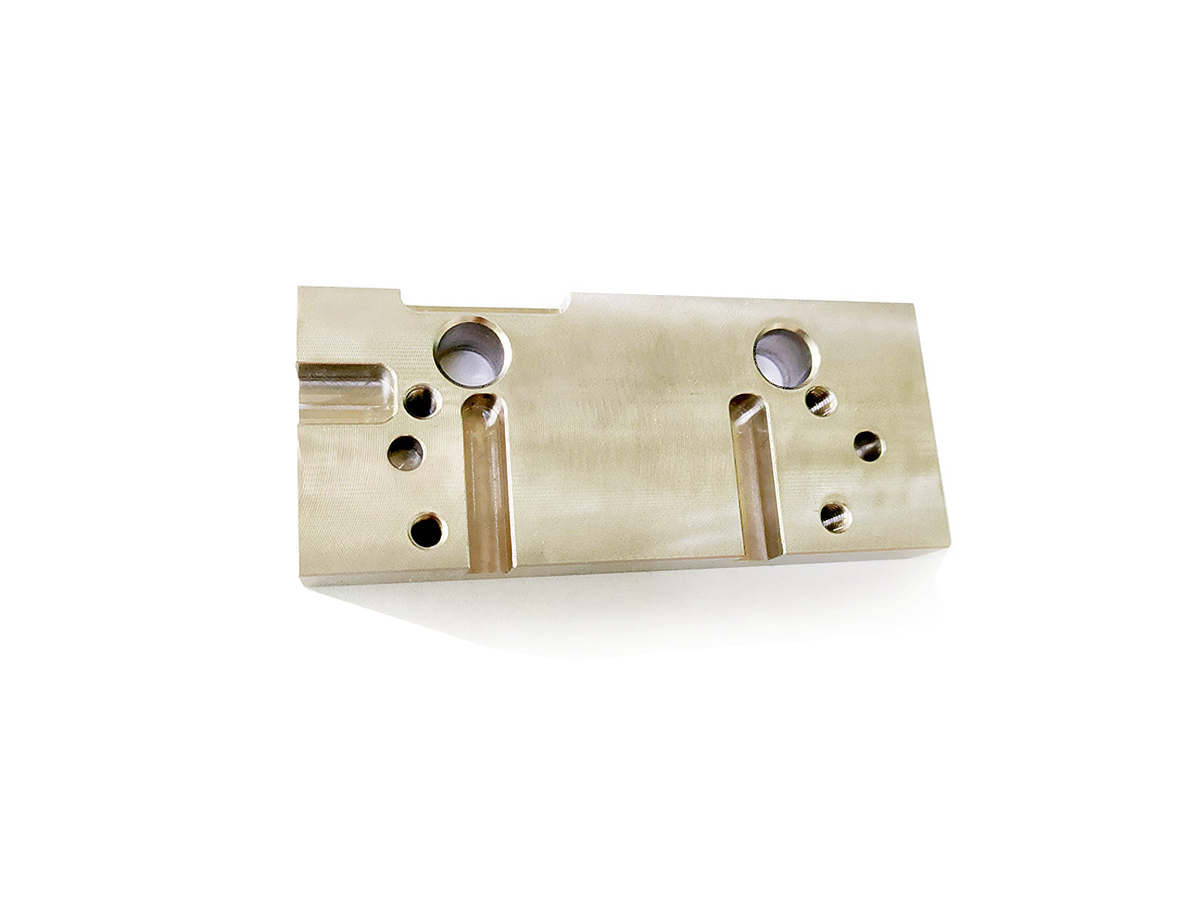Titanium CNC Machining in Nuclear Industry: Ensuring Safety and Reliability with Advanced Alloys
Introduction
The nuclear industry demands materials that endure extreme conditions, including radiation exposure, high temperatures, and corrosive environments. Titanium alloys, particularly Ti-6Al-4V (Grade 5), Ti-6Al-2Sn-4Zr-6Mo (Grade 7), and Ti-3Al-2.5V (Grade 12), offer exceptional corrosion resistance, impressive mechanical strength, and radiation stability, making them ideal for critical nuclear applications such as reactor components, coolant systems, and structural supports.
Leveraging advanced CNC machining, nuclear-grade titanium components can be precisely manufactured with strict dimensional accuracy and complex geometries. Precision machining significantly improves component reliability, ensuring safety, longevity, and optimal performance in nuclear facilities.
Titanium Alloys for Nuclear Applications
Material Performance Comparison
Material | Tensile Strength (MPa) | Yield Strength (MPa) | Corrosion Resistance | Typical Applications | Advantage |
|---|---|---|---|---|---|
950-1100 | 880-950 | Excellent (>1000 hrs ASTM B117) | Reactor structural supports, fasteners | High strength, superior fatigue resistance | |
1150-1250 | 1080-1180 | Superior (>1200 hrs ASTM B117) | Reactor coolant systems, valves | Exceptional corrosion and radiation resistance | |
620-780 | 483-655 | Excellent (>1000 hrs ASTM B117) | Coolant piping, fittings | Good formability, reliable corrosion resistance | |
860-950 | 780-830 | Excellent (>1000 hrs ASTM B117) | Lightweight brackets, non-critical structures | Balanced strength and weight, corrosion resistant |
Material Selection Strategy
Choosing titanium alloys for nuclear industry applications requires careful consideration of mechanical performance, radiation resistance, and corrosion protection:
Reactor structural supports and safety-critical fasteners that must withstand radiation, mechanical stress, and temperature extremes benefit from Ti-6Al-4V (Grade 5) due to its high tensile strength (up to 1100 MPa) and exceptional fatigue resistance.
Reactor coolant systems, valves, and high-pressure components requiring superior corrosion protection (>1200 hrs ASTM B117) and radiation stability use Ti-6Al-2Sn-4Zr-6Mo (Grade 7), ensuring long-term reliability under extreme conditions.
Coolant piping, fittings, and components that need good formability combined with reliable corrosion resistance select Ti-3Al-2.5V (Grade 12), ensuring safe and efficient fluid management in nuclear facilities.
Non-critical structural elements and lightweight brackets favor Ti-5Al-2.5Sn (Grade 6), providing optimal balance between moderate strength, low weight, and corrosion resistance.
CNC Machining Processes
Process Performance Comparison
CNC Machining Technology | Dimensional Accuracy (mm) | Surface Roughness (Ra μm) | Typical Applications | Key Advantages |
|---|---|---|---|---|
±0.02 | 1.6-3.2 | Structural brackets, simple mounts | Economical, consistent quality | |
±0.015 | 0.8-1.6 | Rotational components, reactor fittings | Improved precision, fewer machining setups | |
±0.005 | 0.4-0.8 | Complex valves, reactor core parts | High accuracy, excellent surface quality | |
±0.003-0.01 | 0.2-0.6 | High-precision reactor components, sensors | Maximum accuracy, intricate geometries |
Process Selection Strategy
Selecting CNC machining methods for nuclear titanium components depends on complexity, accuracy demands, and safety requirements:
Basic structural brackets and mounts needing moderate accuracy (±0.02 mm) utilize 3 Axis CNC Milling for cost-effective and reliable production.
Rotational fittings, coolant components, and moderately complex parts requiring higher precision (±0.015 mm) employ 4 Axis CNC Milling, minimizing setups and improving dimensional accuracy.
Complex reactor valves, precision components, and intricate nuclear reactor parts requiring stringent tolerances (±0.005 mm) and superior finishes (Ra ≤0.8 μm) significantly benefit from 5 Axis CNC Milling, enhancing performance and reliability.
Highly precise micro-components, sensors, and critical nuclear system elements demanding extreme dimensional accuracy (±0.003 mm) rely on Precision Multi-Axis CNC Machining, ensuring ultimate reliability and safety.
Surface Treatment
Surface Treatment Performance
Treatment Method | Corrosion Resistance | Wear Resistance | Max Operating Temp (°C) | Typical Applications | Key Features |
|---|---|---|---|---|---|
Excellent (≥800 hrs ASTM B117) | Moderate-High | Up to 400 | Structural supports, brackets | Enhanced corrosion protection, durability | |
Excellent (≥1000 hrs ASTM B117) | Moderate | Up to 400 | Reactor fittings, coolant components | Superior corrosion resistance, contamination control | |
Outstanding (>1000 hrs ASTM B117) | Very High (HV1500-2500) | Up to 600 | Valves, high-wear reactor components | High hardness, reduced friction | |
Exceptional (>1000 hrs ASTM B117) | High (HV1000-1200) | Up to 1150 | High-temperature reactor core parts | Excellent thermal insulation, increased lifespan |
Surface Treatment Selection
Selecting suitable surface treatments for nuclear titanium components involves corrosion resistance, wear performance, and thermal management:
Structural supports and brackets requiring reliable corrosion protection and enhanced longevity utilize Anodizing to maintain structural integrity.
Reactor coolant fittings and internal components exposed to corrosive fluids and radiation conditions benefit from Passivation, providing excellent surface purity and corrosion resistance.
High-wear reactor components, valves, and moving parts that encounter friction and wear conditions use PVD Coating for exceptional hardness and reduced friction, ensuring sustained operational reliability.
Critical reactor core components exposed to high temperatures benefit from thermal barrier coatings (TBC), which improve thermal insulation and extend operational life.
Quality Control
Quality Control Procedures
Rigorous dimensional inspection via Coordinate Measuring Machines (CMM) and optical comparators.
Surface roughness measurements using precision profilometers.
Mechanical testing (tensile, yield, fatigue) according to ASTM standards.
Corrosion resistance testing via ASTM B117 (Salt Spray Test).
Non-destructive testing (NDT,) including ultrasonic, radiographic, and liquid penetrant inspections.
Comprehensive documentation aligned with ISO 9001, ASME NQA-1, and nuclear industry-specific standards.
Industry Applications
Titanium Nuclear Component Applications
Reactor structural supports and critical fasteners.
Coolant system piping, valves, and fittings.
High-pressure, radiation-resistant internal reactor components.
Lightweight brackets and protective assemblies.
Related FAQs:
Why is titanium used in nuclear applications?
How does CNC machining enhance nuclear component reliability?
What titanium alloys perform best in nuclear reactors?
Which surface treatments enhance titanium durability in nuclear environments?
What quality standards are critical for nuclear titanium components?

